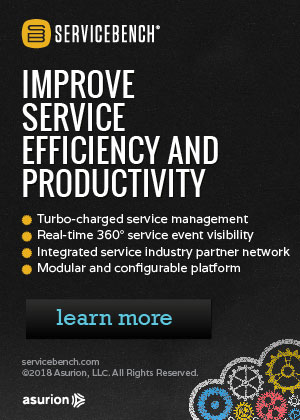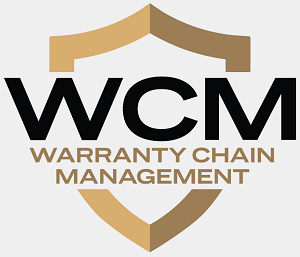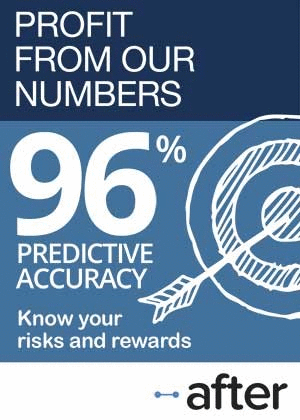February 27, 2009 |

|
ISSN 1550-9214 |
Warranty Improvements:Clever companies are now looking beyond warranty, wondering what else they can do with their data to improve quality and service and further reduce costs. At the WCM Conference in a few weeks, several will report on the status of these efforts.
Manufacturers and the consultants who work with them on warranty projects are going to report upon some of their recent success stories at the Warranty Chain Management Conference in Orlando. Those who began working on warranty claims processing projects years ago are now reaping the benefits of lower cost. But they're also finding that having that basic infrastructure in place now allows them to go in new directions, such as deeper into analytics and data mining, or closer to their dealers and suppliers. Wayne Relyea, a senior manager of technology solutions at BearingPoint Inc., is speaking in Track 15 on the subject of "Advanced Warranty Containment: The Key to Better Performance and Higher Profits," about a project with a major manufacturer of passenger cars and light trucks that he is not at liberty to name. "We have worked with a number of the large U.S. automotives as well as one of the Asian automotives that has a U.S. practice here," Relyea said. "We've been working primarily within their quality shops. They've been looking for a way to better identify emerging issues, and then once those issues were identified, a way to go through the data to really get to the true root cause analysis. And they didn't feel that warranty, and the data within the warranty claims, was getting them there." 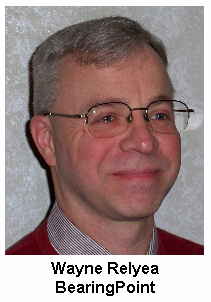 The effort started five years ago, he said. The case study he said he'll be referencing at the conference is the first to reach full production status. But because of concerns voiced by the customer, he said he will be unable to name them. "But it has just had significant bottom line impact for that customer," he added. "And that is what actually got a lot of these other OEMs interested in talking to us and implementing similar systems." Data From the Vehicle ItselfThe system that BearingPoint and the customer designed integrates warranty claims data along with the vehicle information and the on-board computer's diagnostic information. "That's really the paradigm changer here: the diagnostics information," Relyea said. The system uses a variety of database and business intelligence software modules to manipulate the data, but he said the key is really in what data is being manipulated, not how or by what. Warranty claims data is necessary and important, but it's not enough. Claim forms may be filled out in detail and all the codes may be correct. But they were filled out by people whose primary goal is to get paid, not to help engineers with their research. In contrast, the diagnostics data can provide a snapshot of the vehicle at the time of the failure, allowing researchers to probe deeper for clues. That level of detail, Relyea said, goes well beyond what's available within a warranty claim form. "It's not so much the software or how you use it," he said. "It's what data are you looking at?" Relyea said the new system extracts the on-board data from the vehicles themselves, with the help of the technicians at the dealerships that are actually servicing the vehicles. "We're actually pulling all that on-board data, bringing it back into a central warehouse, and then really focusing on analysis of that diagnostic data." Repair technicians have been using that data for decades to help them fix vehicles, but Relyea said that until recently nobody was pulling it all into a centralized database to help with root cause analysis. And so far, only this particular customer and perhaps BMW have done so. Granted, Relyea said the extracted data is generally in a hexadecimal format with variable field lengths, so it isn't that easy for people to interpret. But he said he's actually developed a skill where he can look at binary or hex data and convert it in his head into letters and numbers. It's not easy or fun, but the point is that it can be done. And with the right software filters and translators, it's a skill that nobody else needs to learn. In the future, Relyea said BearingPoint hopes to spread the technology beyond automotive. Any products which have on-board diagnostics that can be uploaded and analyzed are possibilities. "Everyone's laptop, when the 'blue screen of death' comes up, can send off images and data dumps, core dumps, back into a centralized host," he suggested. "We've talked to folks in the health care industry that have MRIs, CAT scans -- all the big heavy iron scanners. They all have 'phone home' capabilities and automatic diagnostic capabilities." However, Relyea said that the limiting factor will always be the ability for the manufacturer to harvest the data that its products create. In the automotive situation, the uploads occur only because the repair shops plug into the network periodically for software updates and other online business, creating the opportunity to harvest the diagnostic data. "That's more of a challenge than getting the database set up, getting the reports set up, and getting these clients running," he said. In other words, the problem is not so much the data that's collected as it is the collection of the data. Earlier Warnings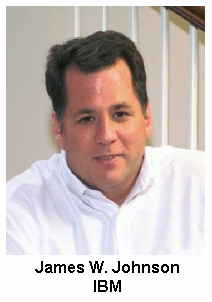 James Johnson, IBM's Americas solutions executive for automotive marketing, sales & service, has been working on another aspect of the same unnamed auto manufacturer's warranty and quality management system. At the WCM Conference, he will be filling in for IBM's Tom Bellinger, who said he couldn't make it to Orlando this year. Although Bellinger's presentation on designing computers for customer self-service is already in the proceedings, Johnson said he plans to change the focus significantly during his portion of Track 10. His new presentation is entitled, "Quality & Warranty Cost Reduction Strategies: IBM's Point of View on Quality Lifecycle Management." "We've done a good amount of research in this area," Johnson said. One of IBM's findings, in fact, is that the growing use of electronic systems within automobiles has led to a situation where software issues now accounts for up to 50% of warranty spending. Detection-to-correction cycles are still too long, warranty accrual rates continue to increase, and no trouble found issues continue to waste time and money. It's not a pretty picture. "We've spent the last four years implementing the lion's share of the new [unnamed customer's] global warranty processing system," Johnson added, "and we've done work with other major OEMs globally in the world of diagnostics and analytics. So there's a broad range of capabilities." As he will detail in his slide deck, IBM's capabilities are built around three pillars: claims processing, analytics, and vehicle diagnostics. The goal is to cut the lag time in detection-to-correction cycles from 100 days, or perhaps as long as 220 days for very complex problems, to a matter of perhaps weeks. "We clearly believe that the earlier quality issues are identified, the lower the resolution cost," Johnson said. "It's pretty simple and straightforward." The trick is assembling the right data to make the identification. "Beyond just warranty claims data, we're encouraging our customers to aggregate in call center feeds, social network feeds, blog feeds, historical supplier performance, and service parts history data. And each of those provide leading indicators into potential trends." In fact, Johnson calls it "earlier warning." In the future, he hopes the vehicles themselves will help feed their own telematic data into the system, perhaps even before they're taken in for repair, allowing for even earlier detection of problems. "The connected vehicle is coming," he said. "It's going to be here to stay. And it's going to be the way of the future." And as with BearingPoint's Relyea, IBM's Johnson said he hopes the remote diagnostics technology might make the jump someday it into other industries, as wireless sensors become more affordable and are added to appliances and other products. The one-way devices might allow for self-diagnosis of problems and the two-way devices might even allow for self-healing. But Johnson said his focus is squarely on automotive. Competitive Advantage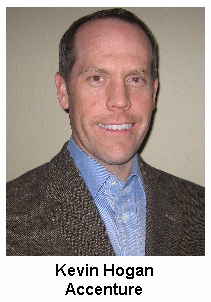 Kevin Hogan, senior manager of supply chain and service management at Accenture, is going to deliver a presentation entitled "Driving Harmonization and Competitive Advantage Through Warranty Systems Implementation" as part of Track 6. Hogan told Warranty Week that he will be presenting details of a case study from yet another unnamed OEM, but this one is in the construction and farm equipment industry. Interestingly, he said the project began as a simple warranty systems replacement project, but eventually grew into a thorough re-examination of the client's whole service strategy, thanks to a realization of the new capabilities the new system brought. "The intentions were to put in an enterprise system linked to purchasing and finance and so forth," Hogan said. "But once we went through the harmonization effort across their service offering, they started to realize the competitive advantage that could come out of it, particularly after they went on a road show to their dealer network." The dealers looked at the Web portal system and saw how they could use it to sit with a customer and compare service and warranty policies for different models -- something they couldn't readily do before. They also could look at the history of a given machine and the status of their open claims -- again, something they couldn't readily do before. And they could tailor the warranties on the different product lines that they stocked so that the premium brand had better terms and conditions than the midrange brand, even if the products themselves were more or less identical. And then of course there were competitive advantages for the manufacturer, such as better data on failure patterns, earlier warnings of failure patterns, and more feedback for designers. Just going from one warranty system per nameplate to one warranty system for the whole company allowed them to see failure patterns in otherwise separate product lines that wouldn't have been noticed as quickly before. Singing the PraisesBy the end of the implementation, Hogan said, the quality and engineering people were the ones singing the praises of the new warranty system. Ironically, their enthusiasm surpassed even that of the warranty people. This, he suggests, is because the previous system did a passable job with warranty claims processing, but a not-so-good job with the interfaces to the engineering and quality departments. The new system was good at both. "They were one of these classic manufacturing and industrial companies that didn't really do a very good job feeding that back," he said. "Warranty, for them, was keeping the customer happy, keeping the dealer happy, and reimbursing the dealer. And that's about where it stopped." Now, that warranty data could be more easily fed to the quality and engineering teams. Relations with suppliers and service partners also improved, Hogan said. The extended warranty administrator they were working with got faster access to better data on sales, replacing a manual paper-based process. Parts suppliers got a better picture of claims data and failure patterns. "Now they're able to take their warranty system -- not just the system but their warranty offering to their dealer network -- they're able to integrate that with their overall service strategy," he said. Before, when the company used multiple disconnected warranty processing systems, it wasn't so easy to track a particular unit from manufacture to retirement. Now they have everything in a central database, keyed by serial number. And now it makes sense to talk about improving service, both in and out of warranty. Looking at ContractsOthers are planning to use their speaking slots in Orlando not so much to talk about software innovations as they will about beneficial changes they made to contracts and relationships with their suppliers and customers. In a talk entitled "Early Warranty Involvement in Product Development Business Processes: Successful Quotes, Agreements and Terms," Dr. Andre Kleyner, the global reliability engineering leader at Delphi Corp., and John King, Delphi's global metrics manager, are jointly presenting the results of a project that helped the company reduce warranty costs simply by sharpening the terms and conditions of its warranty agreements. "For some years, we were probably not paying enough attention to all the details related to warranty," Kleyner said. One big reason was that suppliers generally weren't paying as high a proportion of their sales revenue as were the OEMs they supplied. "That's actually been changing lately," he said, "because OEMs are also becoming more conscious about what's going on with their warranties." Kleyner said he thinks that automotive suppliers such as Delphi quickly realized that they needed to look at their supplier warranty agreements, making the language more exact and more relevant to the present day. "In some instances, we were being billed for some warranties that we actually weren't responsible for," he said. Some claims were for products whose supplier warranties had expired. Others were for products for which no trouble could be found. And still others were obviously done in by end user customer abuse rather than by mechanical or electrical defects. 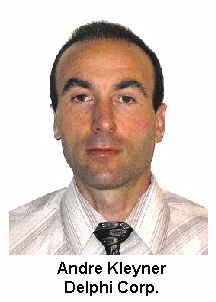 "We sell a lot of automotive radios," he said. "And we found some with gum wrappers or coins inside the CD player." Amazingly, the old agreements weren't clear about what was to be done in those cases, Kleyner said. They'd been written years ago by salespeople or business managers who didn't really have any technical expertise regarding warranty. So a new project was born. Much of Kleyner's and King's work was related to simply defining what the responsibilities of the OEM were versus what the responsibilities were for the supplier. But some of it was very specific, such as whether certain returned parts could be remanufactured or not, or how long of a delay there would be between the return of a part and the billing for it. Again, the old agreements were largely silent on these terms. "The whole idea was to get a warranty expert involved in this process earlier," Kleyner said, "so we could avoid those problems later, when the warranty claims start coming back in." He said such a person would be more familiar with the technical aspects of warranty, and would be able to help write better agreements with clearer terms. Such a person could provide a much clearer guideline for how to deal with specific warranty problems and who is ultimately financially responsible. Kleyner said he hopes the increased attention on warranty agreements will help both OEMs and suppliers reduce warranty costs by perhaps 10% or more. "In some instances, it will help us avoid going through some motions, and spending some money, such as shipping departments sending parts back or disputing certain claims. It all takes time and money," he said. "So if things are clear, and both parties are clear who's responsible, that will help bring savings to both parties and result in a 'win-win' situation for both supplier and OEM." Vendor Warranty Calculation Tool While Kleyner will talk about a supplier's relationship with its OEMs, Kjell Hammarstrom, the senior warranty cost program manager at Sun Microsystems Inc., will talk about the relationship between an OEM and its suppliers. In a presentation entitled "Warranty Cost Savings Going Upstream" that will be part of Track 10, Hammarstrom said he will detail how Sun has been able to cut purchasing costs by re-examining the whole question of supplier warranties. "Historically, we have invested a lot of time focused on design, delivery, and product failures," he said. "We look hardware components or how we pass the call to engineers, and how much time they spend, and so on. This presentation is more towards the other end of the warranty chain, going upstream to the vendors." Hammarstrom said many times, computer companies such as Sun design a product or a component and another company actually manufactures it. It saves Sun and other computer companies quite a bit of money, but then some of that savings might be lost because of quality and warranty issues. Hammarstrom said he thinks there's a way to save on warranty as well. "Let me give you an example," he said. "Let's say we would pay an extra $100 per product to get a warranty on a product we buy from our vendor, but I find I could go out and repair this product locally for $10 if there was no warranty on the product." Therefore, Sun would be better off buying the product without a warranty from the supplier, and getting it repaired somewhere else, out of warranty. The challenge is in knowing when it makes sense to depend on the supplier's warranty and when it makes more sense not to. Sun has been working on this dilemma for years, and Hammarstrom said he wants to share some of the wisdom gained along the way. "Normally, you don't look upstream," he said. "So you don't look at the alternatives this way, to split up costs. That was not the normal way to look at it." It's similar to the dilemma an end user customer faces when asked to buy an extended warranty, he noted. One factor that determines whether that would be worthwhile is the expected failure rate. Another is the expected cost of a repair. The difference is, end user customers are rarely in possession of the kinds of frequency and severity statistics that would help them determine when it makes sense to buy the warranty and when it doesn't. An even bigger difference is that Sun would be buying in bulk, so it wouldn't be calculating the chance of just one product needing a repair. And Sun would also have to consider the added cost of "no trouble found" situations, where the product doesn't appear to need a repair, yet there is a cost associated with the attempt. Plus, even in situations where Sun might prefer to absorb the cost of repairs itself, there would be a need to negotiate contractual protections against an epidemic failure, where a widespread defect drives up the failure rate to unacceptable levels. Hammarstrom said the best way to deal with that is to specify a maximum failure rate in the contract, above which the vendor will have to absorb. "You need to have a lot of safety nets," he said, "but you normally do that in the contract." He said the analysis tool that Sun has developed also helps the company negotiate the right price with its suppliers for a component warranty. For instance, in the above example, perhaps the vendor, when informed that Sun can get the same repair elsewhere for $10, might drop its price for warranty coverage? Or perhaps the vendor might agree to a longer warranty duration as an additional form of compensation? The tool has a simple name: the Vendor Warranty Calculation Tool. It was created several years ago by a team at Sun, and this year Hammarstrom said he thought it was time to begin talking about it outside the company. "I had this in my back pocket for a couple of years," he said. Multiple PresentationsDown the hall, William Eliason from Sun will be talking about "Warranty Accrual and Accrual Management" (Track 11) at roughly the same time as Hammarstrom is talking about going upstream. The previous morning, Jamie Riggs from Sun will be talking about "Warranty Cost Estimation from Driving Factors Via a General Linear Mixed Model" as part of the programming in Track 2. Even Hammarstrom is doing double duty, giving his supplier warranty presentation during Track 10 and participating in a panel discussion during Track 4. In this recession, other companies are finding it difficult to afford to send two people to Orlando, let alone three. So why such a big commitment from Sun in terms of both people and subject matter? "We think it's a very important area," Hammarstrom said. "In this downturn of the economy, it's pretty hard to get approval to do things. But to get three people from the same company on the same conference, that's an indication that we put a high priority on this." He said that as much as Sun gives, it gets back. After all, there aren't that many places where Sun's warranty professionals can meet their peers and trade stories about their work. That's the big value of WCM: finding out about the innovations and the breakthroughs right from the people who worked on them. "We have been a small group at Sun that have been working with this full time," Hammarstrom said. "And it's like rings on the water. The discussion and the involvement in the warranty questions goes to all kinds of areas and levels in the company." And the discussions at WCM are an opportunity to take it outside the company. | |||||||||||||||||||||||||||||||||||||||||||||||||||||||||||||||||||||||||||||||||||||||||||||||||||||||||||||||||||||||||
| |||||||||||||||||||||||||||||||||||||||||||||||||||||||||||||||||||||||||||||||||||||||||||||||||||||||||||||||||||||||||




